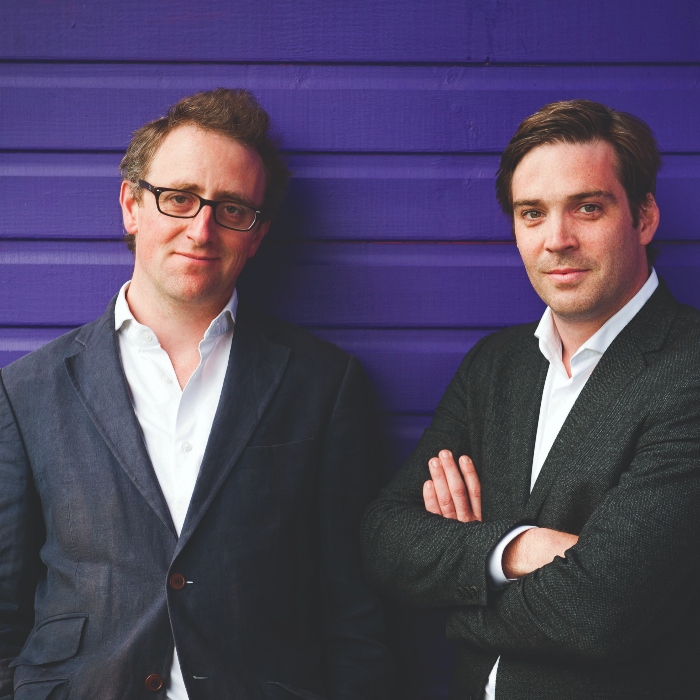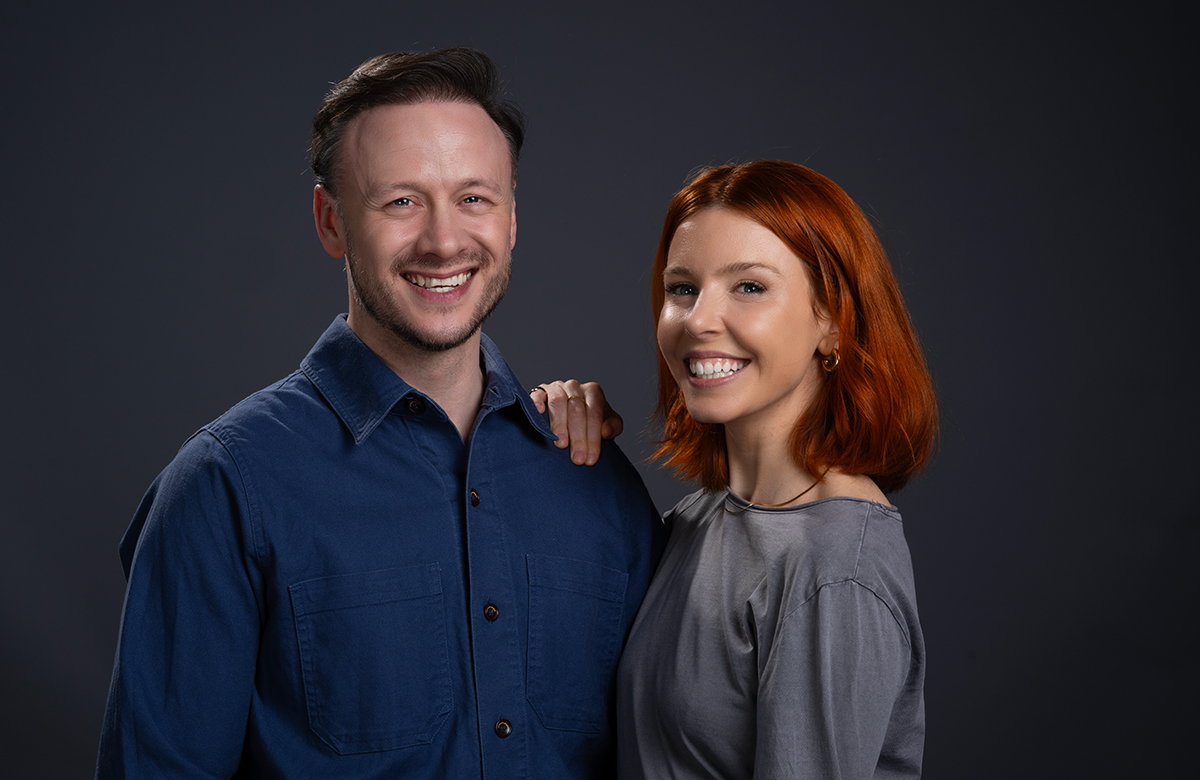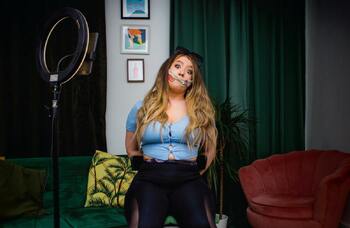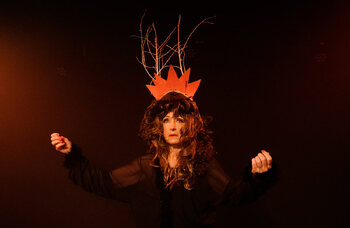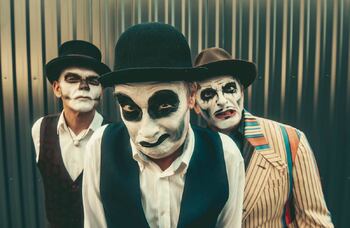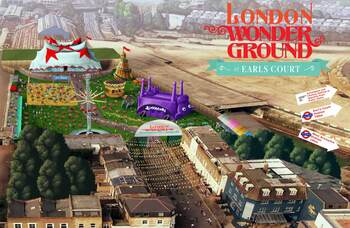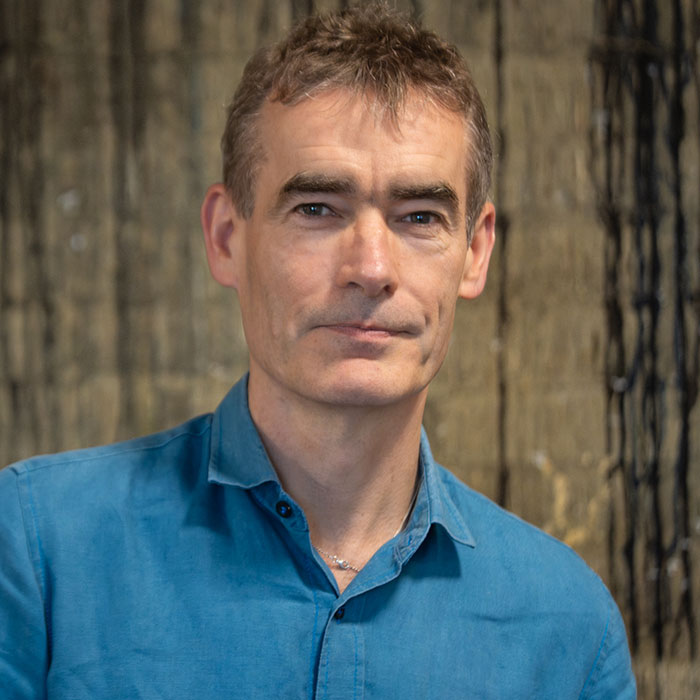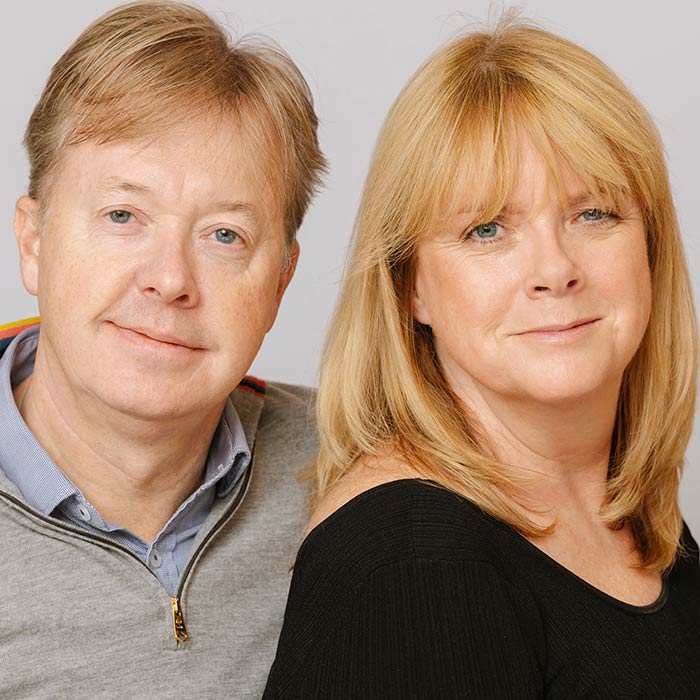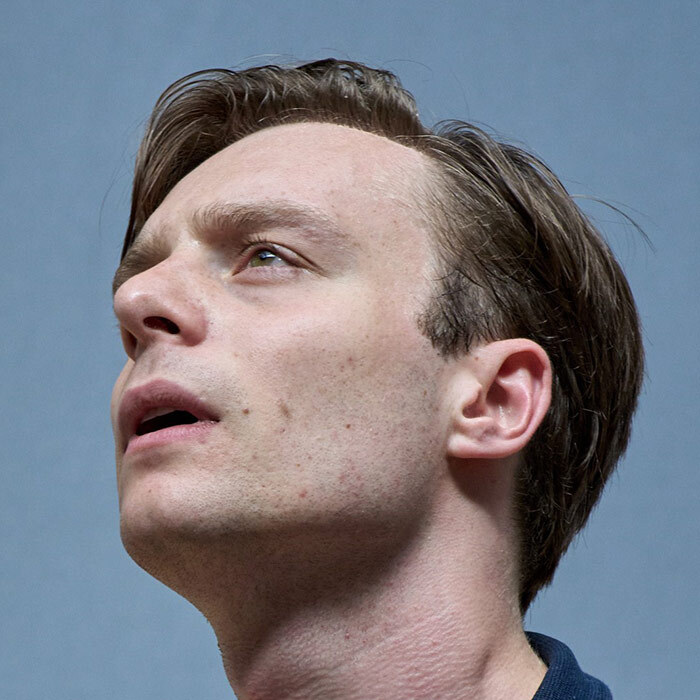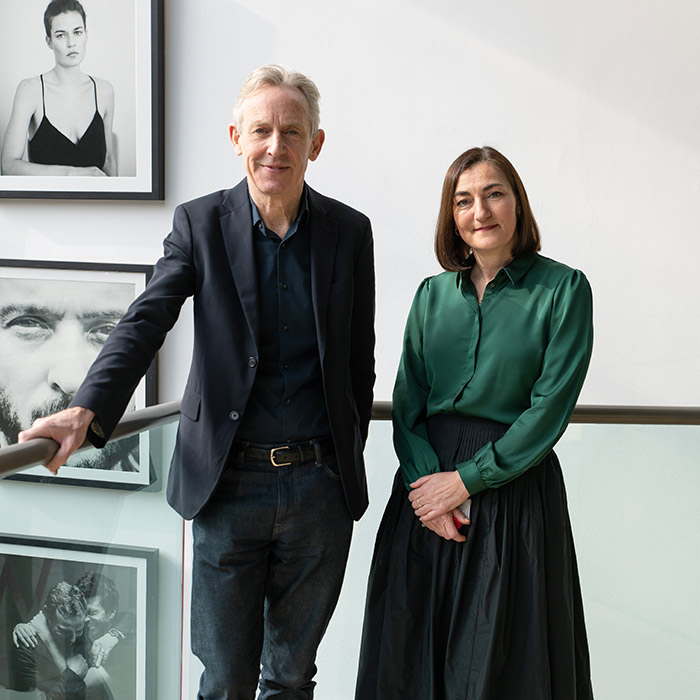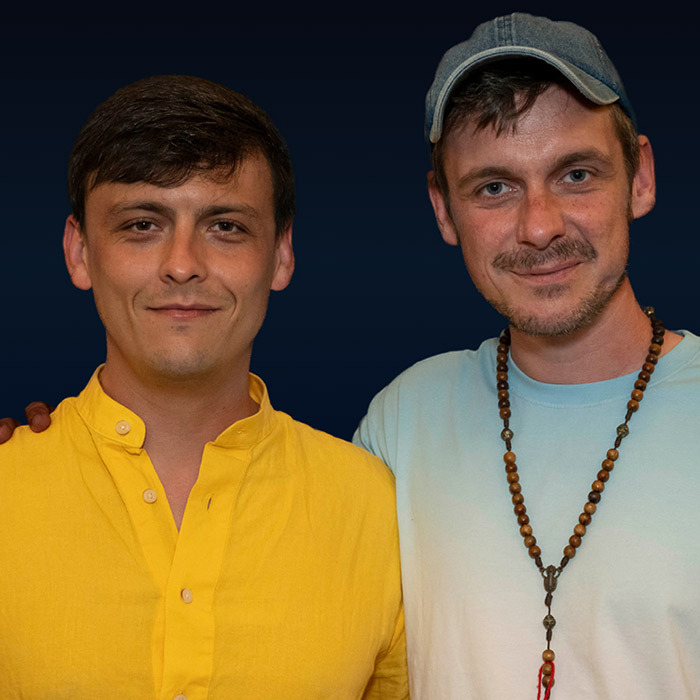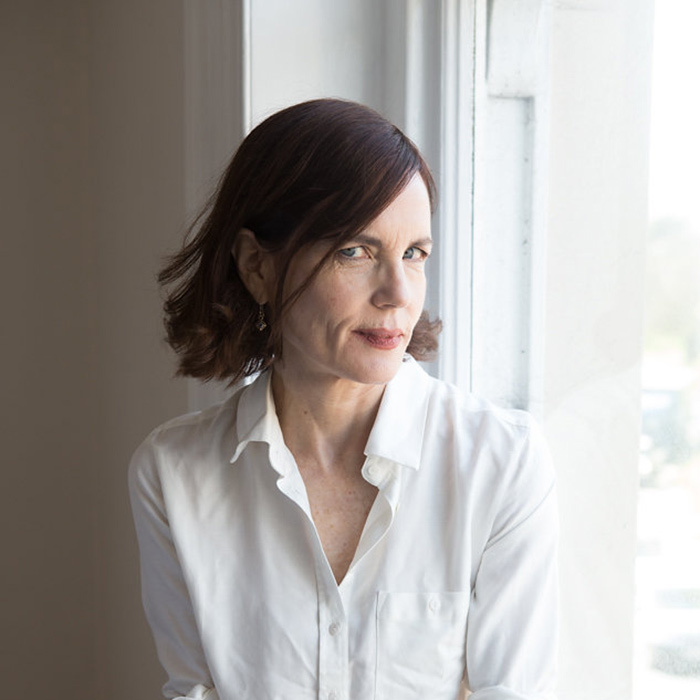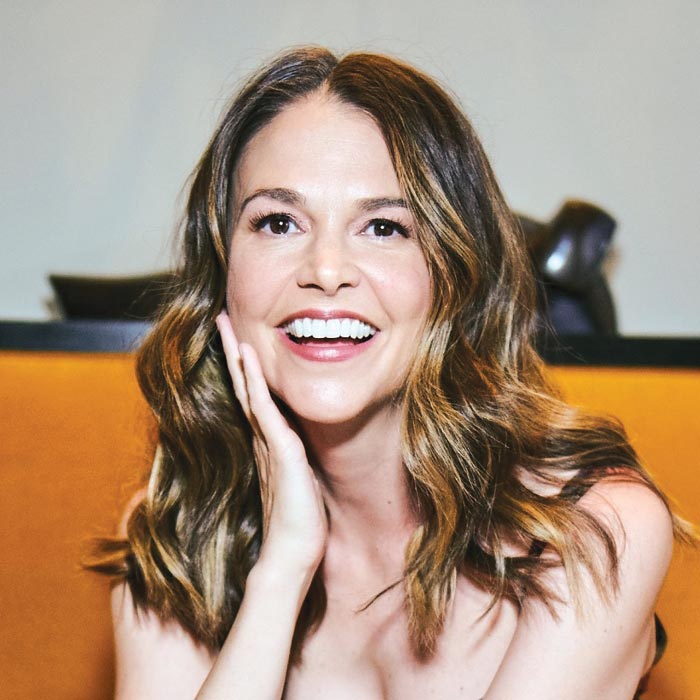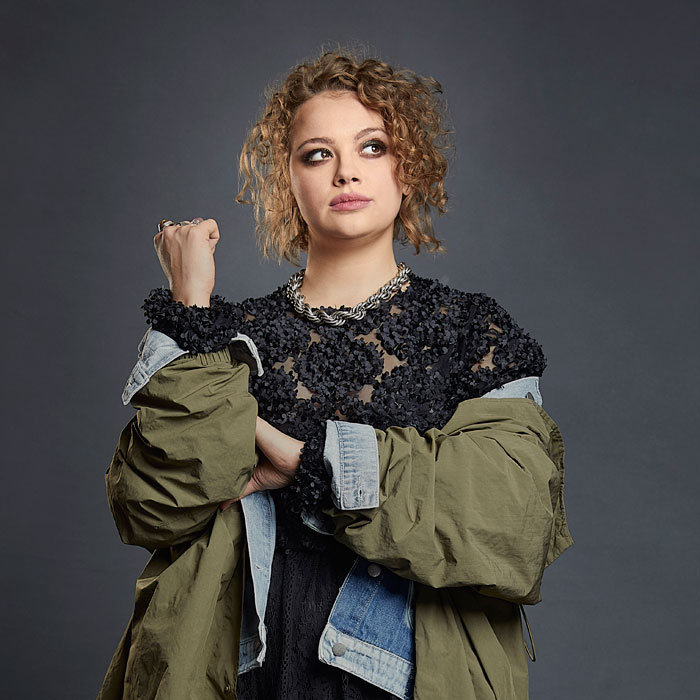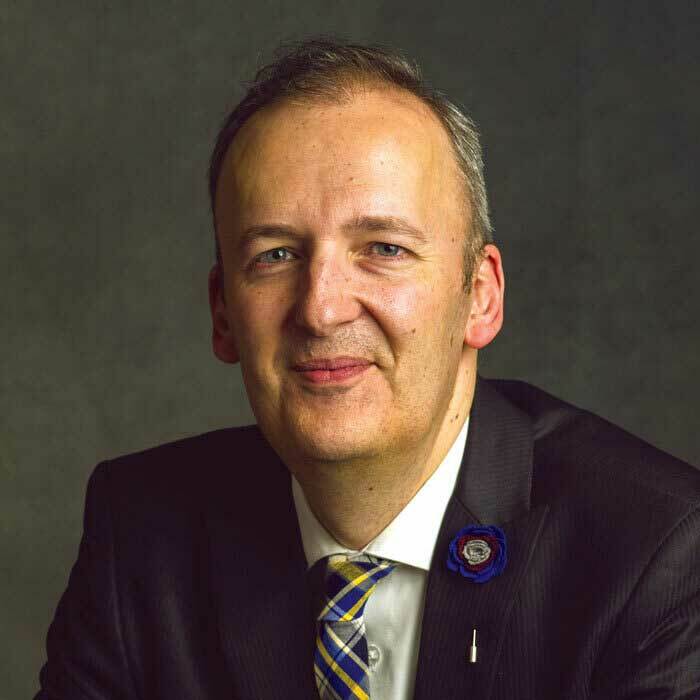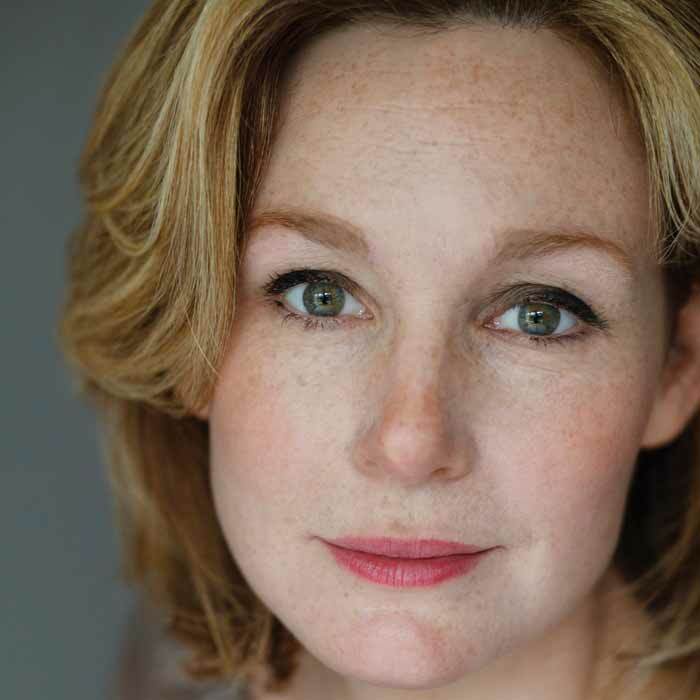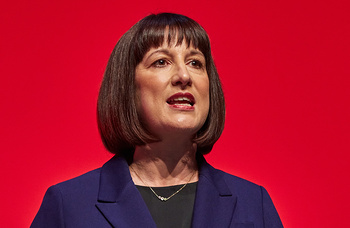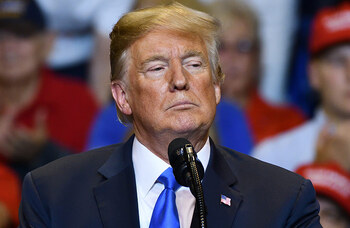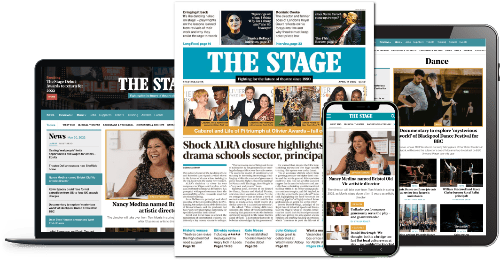Charlie Wood and Ed Bartlam
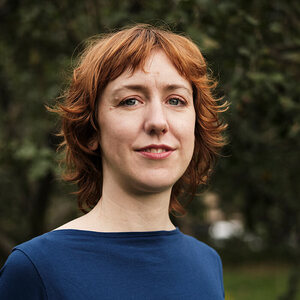 Holly Williams
Holly WilliamsHolly Williams is a freelance journalist and theatre critic. Her novels The Start of Something and What Time is Love? are published by O ...full bio
The pair behind Underbelly have become experts at pop-up venues, expanding to run Edinburgh’s Hogmanay celebrations and festivals on London’s South Bank. Holly Williams finds out how the iconic purple cow grew from a 3am doodle to one of Edinburgh’s ‘Big Four’.
It all started with the Marquis de Sade. An unlikely figure to spawn a slick international live entertainment company with a turnover of millions, perhaps – but it was when searching for a suitably dark, atmospheric venue for Peter Weiss’ play Marat/Sade, 17 years ago, that Ed Bartlam and Charlie Wood hit upon some dank vaults in Edinburgh.
There, Underbelly was born. It may have started as an edgy fringe enterprise, but today Underbelly is big business. Its model is the very opposite of sadism: it is about 360-degree enjoyment. Creating sociable spaces, with enticing food and drink offers, is just as important as programming fun, lively shows.
The ‘big purple cow’ – the inflatable Udderbelly tent – has become a genuinely iconic venue in Edinburgh and on the South Bank. They do Christmas fairs in Edinburgh and in Leicester Square too, and have just unveiled their first, grand plans for Hogmanay in the Scottish capital.
The duo run Pride across London and West End Live in Trafalgar Square, produce their own shows and tours, and have even been exporting the brand to Hong Kong.
Underbelly – the initial Edinburgh venue – still smells of mould. Its distinctive whiff is as much a part of the Edinburgh festival as freezing August rain or getting showered with flyers on the Royal Mile.
While Bartlam and Wood now expect to shift approximately 283,000 tickets this fringe, at 17 different venues – including some of the biggest and brashest of the festival – they’ve no plans to turn those original vaults into anything too glossy.
“We call it the mothership – it’s where it all started,” says Bartlam when I meet him in the pair’s London offices just a few hours before he takes the train up to Edinburgh for the start of the festival. “And that subterranean feeling, that is very fringey, is [still] absolutely what Underbelly is all about.”

Starting out at the fringe
A pair of Old Etonians, Bartlam and Wood initially visited Edinburgh under the auspices of their famous school; it was Wood, the older of the two (43 to Bartlam’s 37), who suggested the vaults as a venue, after he remembered seeing a Grid Iron Theatre Company show there in 1998.
At the time, there was no big vision for world domination, and there still isn’t, they insist. “The one thing you need to know about us is we work very organically,” says Bartlam, the more loquacious of the pair; Wood joins us on a conference call, as he’s already up in Edinburgh. “We’re often asked: ‘What’s the grand plan?’ There has never been a grand plan.”
Still, they pinpoint 2006 – the year the purple cow rolled over to provide an inflatable 400-seat venue in the heart of Edinburgh – as a game-changer. “For the first few years [Underbelly] was a very fledgling fringe venue,” says Bartlam. “Then we heard that Bristo Square was available to use and at that time we needed a bigger capacity venue. We had the idea of it being a big purple cow, which was our logo…”
That logo initially came about by late-night luck. When Underbelly teamed up with Smirnoff for sponsorship in 2003, “they paired us up with a design agency, who must have thought we were crazy”, remembers Wood. “They were quite corporate; we definitely weren’t. The designer did page after page of designs, coming through on fax, all far too bland. At about three in the morning, this poor guy sent through a final page and in the bottom right hand corner he’d literally doodled a cow upside down. That was it.”
Turning that into a huge tent three years later was crucial for the company’s growth. “It established us as a fairly large player in the Edinburgh Fringe landscape; it was identifiable and it allowed us to put on bigger shows,” says Bartlam. The erstwhile ‘Big Three’ – Assembly, Pleasance and Gilded Balloon – morphed into the ‘Big Four’.
Continues…
5 things you need to know about Underbelly
1. When Ed Bartlam and Charlie Wood started Underbelly in 2000, Bartlam was still a student at the University of Edinburgh.
2. Last year, the company sold more than 1.3 million tickets internationally.
3. The purple cow logo was inspired by the original venue being based on Cowgate in Edinburgh.
4. Its standard rate at the Edinburgh Fringe is a 60/40 box office split between the artist and company.
5. The company has won a three-year contract to run Edinburgh’s Hogmanay; this year, the celebrations will involve a new, early-evening firework display for children and a carnival on Princes Street.
Recreating Edinburgh in London
“But almost more importantly, it gave us the ability to start doing stuff outside of the fringe,” he adds. Jude Kelly, artistic director of the Southbank Centre, approached them about bringing the cow to London – although it took a further three years before it would arrive, in 2009, at those pastures new.
It’s now a regular and popular summer fixture that will sell its millionth ticket this year. The key to its success, the pair insist, has been replicating the fringe good-night-out package in the capital.
“We got really energised about taking that fringe model of doing multiple shows in an evening, having a really cool bar or outdoor area and keeping ticket prices reasonable at £10 or £15,” says Bartlam, still energised about it today.
Traditionalists, he says, often don’t really understand that producing model – but there is a huge audience for whom entertainment is about more than just a single, three-hour prestige production.
“People want to see a show that lasts an hour, and then see another show, or go home, or have a drink or have dinner. Everyone in London is time-poor. What we’re about is making entertainment as accessible as possible, [by] making it fit into people’s busy lives.”

There has also been, I suggest, a concurrent trend for experiential entertainment and pop-up street food markets. Bartlam agrees: “It’s about the customer wanting a whole experience around their entertainment. For us, the show starts from the moment people walk through the entrance, whether that’s the South Bank or our fringe venues or, as is the case with Five Guys Named Moe, a foyer bar that takes you back to 1940s New Orleans.”
The latter is their latest producing venture: a revival of a jazz musical about Louis Jordan, in a purpose-built temporary theatre at London’s Marble Arch, which opens on August 29.
“I was on the site this morning, [looking] at a 6-metre hole, because we’re trying to tap into the sewer under the road, so that our loos work… it is all very glamorous,” he laughs. Their roles are now as operational as creative: “We are experts in planning applications, public safety, talking to councils and local stakeholders, because we build sites and take them down again. Which is a bit of a niche, I suppose – it’s certainly not the stuff a normal theatrical producer would ever get involved in.”
Are they still involved on a programming level? “At the fringe, we’ve got a fantastic programming team; we’re not involved on a day-to-day basis like we used to be, when it was all us completely for years. What Charlie and I are interested in doing is looking at the big creative picture.”
The pair tease each other gently – less gently, if they feel they’ve been interrupted mid-flow – but the company’s roots clearly intertwine with genuine friendship. And both express disbelief that anyone could run a business by themselves.
“People always ask us who does which bit, but we don’t really divide it; it’s a symbiotic thing,” says Wood, who adds that he “can’t imagine” working without a business partner.
“You need that friend as well as business partner when times are difficult – and times can be difficult,” chimes in Bartlam. “We’ve always been very lucky that we’ve had that.”
And, they explain, Underbelly has matured with them; it’s a slightly different beast now. While the DNA of their programming remains the same – their shows should always be “fun and different” – their demographic has changed.
“It’s got a bit older: as we’ve grown up, the brand has grown up,” says Bartlam. “The early days on the fringe were all people our age, in their early 20s; it was dancing on bars and doing loads of shots. That still happens – to an extent – but I hope we cater for a much wider audience.”
Continues…
Ed Bartlam and Charlie Wood on…
How to survive the festival…
Ed Bartlam: Get out of Edinburgh occasionally. One of the things we often do is, just us two, go off and have a lovely pub lunch somewhere. You can drive 20 minutes and be in the countryside.
Favourite Underbelly shows…
Ed Bartlam: 1927’s Between the Devil and the Deep Blue Sea in 2007 – I remember seeing that and thinking ‘wow’. And Stewart Lee’s 90s Comedian.
Charlie Wood: Jackson’s Way in 2004 by Will Adamsdale, which won the Perrier [now the Lastminute.com Comedy award]. And my favourite of all time was a production of Cabaret in 2001, which starred an unknown performer called Eddie Redmayne…
Taking Underbelly to Asia…
Ed Bartlam: It’s a fascinating market. Hong Kong was a challenge, we learnt a lot in terms of what you programme, and what you don’t. But shows like [boylesque cabaret] Briefs sold more to young professional Hong Kong Chinese than to expats, which really surprised us, because it’s quite a risque, camp show. They were coming to let their hair down.
Funding cuts
While they may once have been punky (albeit posh) upstarts-without-a-plan, these days the pair give a smoothly polished interview that, when not reminiscing over downing shots, can lapse into marketing speak.
There’s surely far-sighted ambition in taking on a huge civic project such as Hogmanay, too. Bartlam is quick to respond to a question about cuts from the City of Edinburgh Council – funding for the event was slashed from £1,262,456 to £812,456 earlier this year – with a well-oiled spiel.
“The money from the council has reduced but we’re putting on a bigger, more challenging and exciting programme than has ever been done before. We’re extending the length of the fireworks, the street party for the first time ever is going to have its own creative team led by Martin Green, head of Hull City of Culture and head of ceremonies for the London 2012 Games,” he says.

“We’re actually doing more, through commercial incomes and sponsorship. Our big message is what we’re doing is bigger and bolder.”
It must be a very different challenge, I suggest, from flogging a comedy show and a pint. They have to please a whole city – from locals to tourists, from families to groups of friends out for a good time.
“Obviously there are different audiences and there are different markets, and we’re evolving our business to try to address all of those needs,” says Wood. “But it’s about understanding that the audience isn’t actually always that different. The audience member who will watch opera will also watch stand-up and will also come to Hogmanay.”
Continues…
Ed Bartlam and Charlie Wood’s top tips
• Make sure you enjoy doing what you do. Entertainment is there to be enjoyed – and you have to enjoy it first.
• Look at what the audience wants, and look at that holistically – the whole package.
• Change. Accept that you make mistakes. We love tinkering and changing things.
Expansion at Edinburgh
They’ll both be up in Edinburgh for the whole fringe this year; you might spot them, as they like to walk around their venues, changing things that aren’t working. After 17 years, they have a fairly long view on the fringe. So, how has it changed?
“Edinburgh has changed hugely,” says Wood. He points out that a decade ago, with 2,000 shows a day, people were saying it couldn’t grow any bigger – “and now we’re at 3,000 shows a day”.

He explains: “Obviously there’s been an explosion in the past 20 years in comedy, and in the past five to 10 years in the free fringe, and in circus. It is a festival that has shown it can produce excellence in all art forms – and it’s doing that on speed.”
According to Bartlam, we’re in a purple patch – as it were – for breakout theatre. “There was a bit of a lull in the late 2000s: it seemed like all the big opportunities were for comedians. I think that’s changed in recent years. Producers and promoters are really going back to the fringe.” He points to the success of Fleabag and Mischief Theatre, both of which were at Underbelly before moving to TV and the West End.
What tips do they have for standing out? “It sounds bleeding obvious, but people have to come with an audience-ready show,” says Bartlam. Wood agrees, adding that the fringe audience is actually less kind than average. “The days when you could buy a ticket for £3, and it was so cheap it didn’t matter, are gone. Critics are also less kind, and there’s definitely less mainstream media. The fringe as a tradeshow, [a chance] to sell your work, also wants work that’s quite polished. That’s a big change.”
Such changes won’t be celebrated by everyone – some doubtless feel nostalgic for a festival that was rough and ready, rather than full of slick sales pitches. Another common complaint is that the fringe’s independent spirit is gobbled up by big venues, big promoters and big names. Underbelly falls into that category now – although they resist the notion that big venues are bad for the fringe ecology.
“Any festival needs large venues and large promoters,” insists Bartlam. “What larger venues like us do is produce, at our own risk, big productions.” He points out that their passion project of the past two years, the dedicated Underbelly Circus Hub, makes no commercial sense. “We do it because artistically we believe in circus and we believe the fringe should have a circus venue.”
And with more than 300 venues around Edinburgh, there’s plenty of scope for different scales, Wood insists, marvelling at the way the fringe still seems to support it all, big and small.
“There’s as much a range of venues as there ever was. There are the producers and the artists for all of it, and there are audiences for all of it – that’s the extraordinary thing about the fringe. No one can explain why it continues to work, but it does.”
Profile: Underbelly
Directors: Ed Bartlam and Charlie Wood
Ticket sales at 2016 Edinburgh Fringe: 250,065
Edinburgh Fringe 2016 box office turnover: £2.5 million
Number of employees: 350
Underbelly is hosting shows at the Edinburgh Festival Fringe until August 28
Big Interviews
Recommended for you
Opinion
Most Read
Across The Stage this weekYour subscription helps ensure our journalism can continue
Invest in The Stage today with a subscription starting at just £7.99
